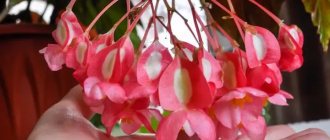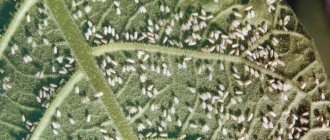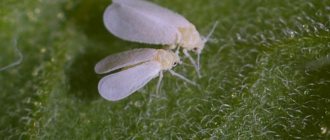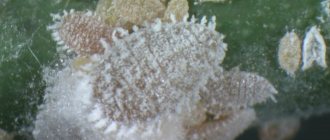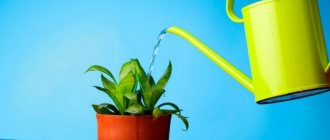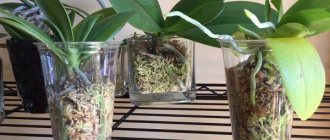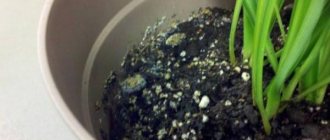Violets are very demanding when it comes to watering and do not tolerate overdrying of the soil and further heavy watering.
In order to provide the violet with comfortable conditions during the holidays and minimize the time spent caring for a large collection, you can organize the cultivation of violets on mats. In this case, watering Saintpaulia will need to be done no more than 1-2 times a week, while the plant will receive the moisture it needs around the clock.
Capillary mats for violets
To organize capillary irrigation, a capillary mat is required, which is a hygroscopic fabric capable of absorbing from 1 to 3 liters of water.
The top layer of the capillary mat is a protective porous film. The purpose of this protective layer is to protect against the ingress of soil and germination of roots, as well as against the occurrence of mold on the main layer.
The base layer is a porous material , usually synthetic felt, that absorbs moisture and holds it for plants. To water the plant, the pot is placed on a capillary mat and, due to its weight, it is pressed, releasing liquid.
Capillary mat.
When using this method, plants receive sufficient moisture without suffering from overdrying. They are convenient to use in trays, pallets and racks. You can purchase capillary mats in specialized flower shops ; the easiest way to find them is in online stores.
ADVICE! If it is not possible to purchase specialized capillary mats, there is a way to organize capillary irrigation on your own using scrap materials.
You can make capillary mats for violets with your own hands from padding polyester or any porous fabric , even an old towel will do. In this case, a piece is cut out of medium-thick padding polyester according to the size of the pallet. The first layer of padding polyester is laid out in the pallet; the top is covered with a thin film from garbage bags.
In this case, it is necessary to make a large number of small holes in the film . This film will have a protective function. After watering, Saintpaulias in pots are installed on this structure.
The advantages of a homemade design are as follows:
- cheapness;
- availability;
- the ability to install very small, lightweight pots.
There are significantly more disadvantages : they quickly become unusable, become moldy, and become dirty. Another disadvantage is that violet roots can grow into the padding polyester layer and green algae may appear.
The synthetic winterizer must be washed or replaced with a new one every 1.5 months.
Where can I buy
The table shows several online stores where you can buy capillary mats.
| Shop | Dimensions | Price |
| compasltd | All rolls are 50 m, but they can be purchased in width: 1; 1.25; 1.5; 1.8; 2; 2.2 | Minimum 6600 rub. |
| 7mark | Roll length 1 m | 265 rub. |
| dacha66 | Roll length from 1 m | Price from 240 rub. for 1m. |
| flagma | 1m length | From 220 rub. |
Application technology
To use special capillary mats, it is necessary to install pallets or trays on a flat surface . If you do not adhere to this requirement, then the moisture will be distributed unevenly across the surface , flowing into the slope area. In this case, some of the plants will receive excess moisture.
Another option is to stretch and secure plastic film to a shelf or window sill. This must be done in such a way that a kind of edge is formed around the perimeter of the area. The purpose of the side is to prevent water from draining.
Next, you need to lay the porous material with a fluffy or rough layer down, and lay a porous film on top and pour water on it.
Pots with violets are placed on this structure; for uniform moistening, it is desirable that they be of the same weight . After a month, you can start watering with the addition of fertilizers.
How to organize the system yourself
You can do automatic watering for indoor plants yourself. There are several ways to create such structures.
What is needed for this
To build a self-watering system with your own hands you will need:
- mini-pump, preferably of higher power;
- hose to prevent sunlight;
- special inserts for connecting to the hose through which water will drip;
- timer - installed in a socket;
- faucets - they are used to create an extensive system.
It is recommended to purchase a hose first, and then a pump. Since the outlet of the latter is important, if it is wider than the hose, the water supply will be significantly lower.
It is necessary to make several cuts in the hose, the number of which depends on the number of flower pots. Droppers are attached to the holes. The watering time is set on the timer, and the pump is immersed in a reservoir of water.
Irrigation principles
To determine the required amount of water for irrigation, you need to consider the capillary mat. There should be no liquid on its surface, but moisture should come out when pressed. Watering must be done when no water is released when pressing on the surface.
Watering capillary mats.
Due to the constant presence of a capillary mat in the room, air humidity increases, which also has a beneficial effect on the condition of violets.
Mature plants can be left without watering for a long time , since they are able to draw water even from a slightly damp mat that does not release water.
At first, you need to focus on the indicated density of the material, which indicates how many liters of water the surface per square meter absorbs and the total area of the cut piece. As a rule, the moisture capacity of capillary mats is from 1 to 3 liters of liquid per square meter .
Depending on the air temperature and humidity of the room, you need to reduce or increase the amount of liquid for irrigation.
Important Operating Instructions
For proper operation of the system, it is necessary to take into account:
- Micro-drip irrigation is best connected to the water supply, especially with a large number of plants. Otherwise, you will need to take a large tank.
- To irrigate several pots, it is recommended to use structures from a 2 liter bottle.
- If the automatic watering system does not have a soil moisture sensor, it is recommended to purchase it separately. This prevents the soil from becoming waterlogged.
Reviews
Forums dedicated to caring for violets provide reviews on the use of capillary mats. Reviews are mostly positive, the plants feel good and bloom profusely.
A common problem is uneven shelf surfaces , since the liquid is distributed unevenly.
In this case, it is necessary, using a simple trial and error method, to select varieties that love moisture more and install them in areas that accumulate liquid.
In order to properly organize watering of violets using capillary mats, it is necessary to monitor the condition of the plants during the first months and regulate the volume of water when watering.
Sergey. “When using capillary mats, the violets began to lift their leaves, the black protective film was removed to solve the problem, but now salts and debris accumulate on the mats.”
Ilya. “It’s quite difficult to establish watering, but after success, caring for violets began to take much less time.”
Natalia. “I tried it, but returned to overhead watering, the plants stand on damp mats and this makes them dry out longer, but they are not used for watering.”
Why I like capmat
1. Watering plants is significantly faster - there is no need to pour water into each glass, which often overflows from the top, seeps along the walls and simply pours out from below, without wetting the earthen lump.
2. There is no water being poured out from the box itself, the excess is absorbed by the mat, then gradually consumed.
The capillary mat is easily washed at the end of the season, dried and waiting in the wings for next year.
Eggplant before planting in the ground also grows on a capillary mat
From personal experience I can say that it saved quite a few of my plants from drying out on purchased peat soil. Unfortunately, I did not photograph those who grow up on the mat and those without. I can only say that the eustoma without a mat was very sad, it constantly dried out, and it was very difficult for me to keep track of so many plants.
author Ivanova I.M., photo by the author
We saw capillary mats for watering plants in action when we visited the Yegoryevskoye Production Association. Now it is the largest greenhouse farm. On the site of old greenhouses, a modern greenhouse complex (6 hectares under glass) was built here. This farm specializes in growing flowers and seedlings, rooting plant cuttings. It became the official representative office of the largest German company.
Our excursion to the Egoryevskoye Production Association turned out to be very useful: we saw the modern equipment of the greenhouses and asked questions to the leading specialists of the farm. I’ll tell you about the new technology for watering plants that was introduced here.
Features of keeping on mats
When using capillary irrigation, the soil should consist of peat and raising agents ; fertile soil is not added; therefore, it is necessary to add fertilizer with each watering. Phytosporin should be added once every three months to avoid the unpleasant smell of dampness.
If the mat becomes dirty, you can simply wash the top film and wash the porous fabric in the washing machine on a delicate cycle or rinse it well to remove the dirt.
Capillary mats require regular cleaning.
ATTENTION! Violet babies are not suitable for capillary irrigation, since their weight is not enough to push the mat and squeeze out the water. The consequence is overdrying of the plants. An exception is the use of homemade mats made of padding polyester or other fabric, on which children intensively grow and become stronger.
There should be no expanded clay or polystyrene drainage in the pots ; only sphagnum moss is allowed. If improper drainage is used, violets will not be able to access moisture.
For watering with mats, it is recommended to use plastic pots with a multi-level bottom and large holes for water and air.
Ceramic pots , as well as pots with small holes and legs on the bottom, strictly
- Ceramic pots do not have enough holes and will quickly deteriorate due to humidity. In addition, there is a possibility of mold;
- choosing pots with small holes and legs at the bottom will result in overdrying of the soil.
It is recommended to use pots with a diameter of no more than 9 cm, since larger sizes will lead to the growth of the rosette.
You should pay attention to the total weight of the pot with the plant. It is advisable that all pots with plants be of the same weight , otherwise they will press on the capillary mat with different intensity and the plants will receive different volumes of liquid.
Plants of the same size should be selected for keeping on mats.
Thus, it is recommended to transfer mature, healthy plants with a developed root system to capillary irrigation on special mats . When purchasing a new plant, be sure to quarantine for several weeks, since the likelihood of transmitting diseases and pests through a common tray is very high.
ADVICE! Capillary irrigation must be adjusted to your conditions, so at first you need to carefully monitor the condition of the plants and soil moisture. If necessary, you need to reduce or increase the frequency of watering and the amount of liquid.
If an individual plant constantly gets wet, it makes sense to grow it again, accustoming it to capillary watering from the very beginning. It is necessary to regulate the volume of liquid for one-time watering depending on the time of year and the air temperature in the room.
Advantages and disadvantages
The advantages of capillary irrigation are obvious:
- Unlike other automatic watering systems, watering mats have a minimal cost.
- Availability. You can buy it at any flower shop.
- Continuous watering and humidification of the air around the plants.
- Through such a system, liquid fertilizers can be applied.
- Protection against many diseases, especially fungal diseases, which often arise due to overwatering of soil.
- Possibility to use for a long time.
- Save time.
- Saving water.
- Improves plant growth and development.
But such a system also has disadvantages:
- The surface must be level for laying the system.
- Uneven absorption of moisture by pots of different sizes.
- Minimum absorbed moisture in containers with a large drainage system or large drainage size.
- Requires periodic washing of the material and replacement of polyethylene.
Geosynthetics in household farming
Despite the fact that geosynthetic materials were originally developed to increase the strength of large-scale structures and to combat erosion, they are successfully used by owners of small gardens and vegetable gardens. Their main functions are the following:
- Geotextiles - mulching beds and covering plants, protecting shrubs from frost;
- Geomembrane - waterproofing of drainage and irrigation systems;
- Geogrid - strengthening unstable slopes, reinforcing concrete paths;
- Geogrid - construction of high flower beds and terraces.
However, there are also non-standard ways of using geosynthetics in household farming - for example, replacing watering mats.
Recommended materials:
Flat geogridGeogrid volumetric Geotextiles
